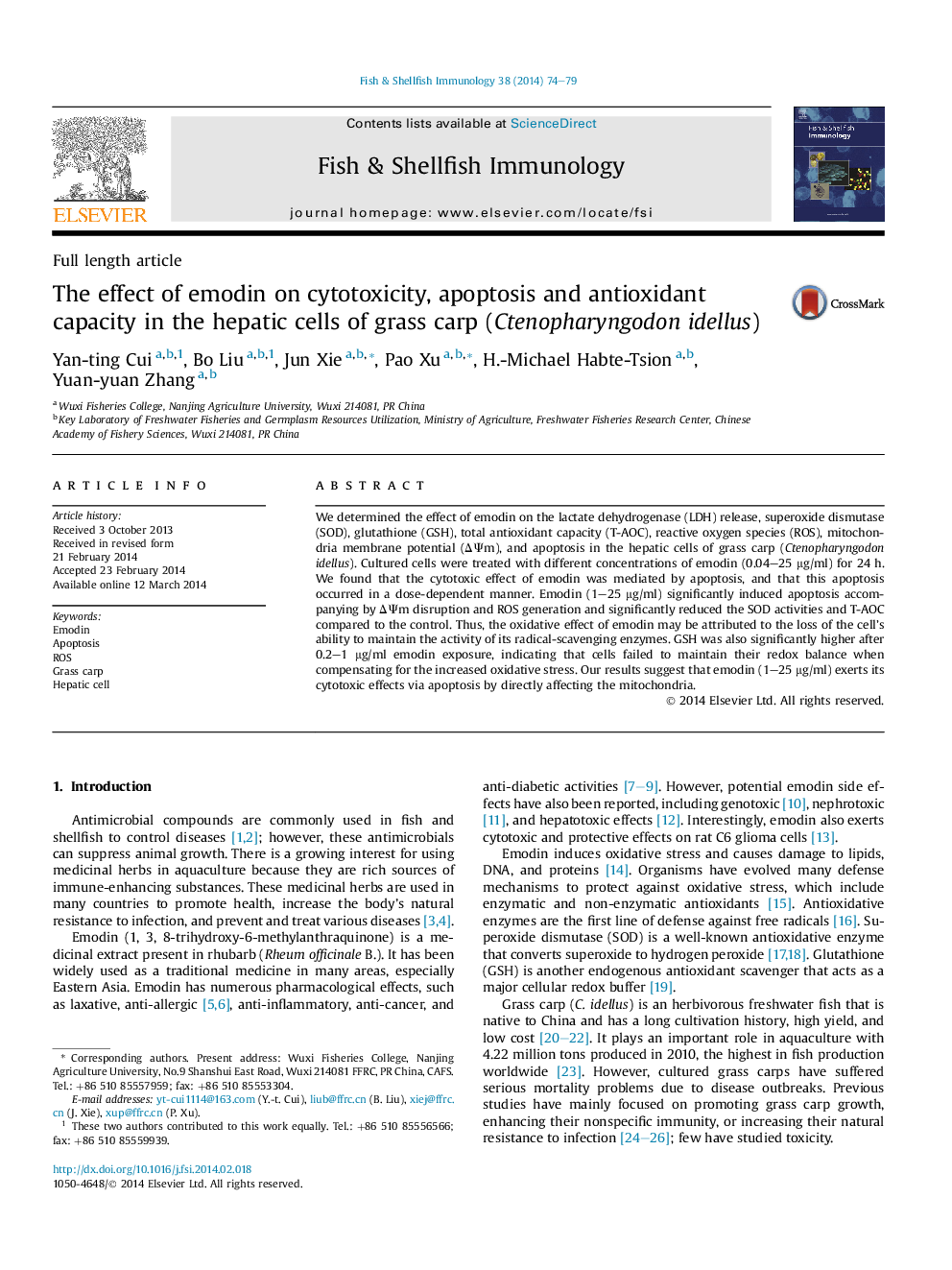| Article ID | Journal | Published Year | Pages | File Type |
|---|---|---|---|---|
| 10971991 | Fish & Shellfish Immunology | 2014 | 6 Pages |
Abstract
We determined the effect of emodin on the lactate dehydrogenase (LDH) release, superoxide dismutase (SOD), glutathione (GSH), total antioxidant capacity (T-AOC), reactive oxygen species (ROS), mitochondria membrane potential (ÎΨm), and apoptosis in the hepatic cells of grass carp (Ctenopharyngodon idellus). Cultured cells were treated with different concentrations of emodin (0.04-25 μg/ml) for 24 h. We found that the cytotoxic effect of emodin was mediated by apoptosis, and that this apoptosis occurred in a dose-dependent manner. Emodin (1-25 μg/ml) significantly induced apoptosis accompanying by ÎΨm disruption and ROS generation and significantly reduced the SOD activities and T-AOC compared to the control. Thus, the oxidative effect of emodin may be attributed to the loss of the cell's ability to maintain the activity of its radical-scavenging enzymes. GSH was also significantly higher after 0.2-1 μg/ml emodin exposure, indicating that cells failed to maintain their redox balance when compensating for the increased oxidative stress. Our results suggest that emodin (1-25 μg/ml) exerts its cytotoxic effects via apoptosis by directly affecting the mitochondria.
Related Topics
Life Sciences
Agricultural and Biological Sciences
Aquatic Science
Authors
Yan-ting Cui, Bo Liu, Jun Xie, Pao Xu, H.-Michael Habte-Tsion, Yuan-yuan Zhang,
